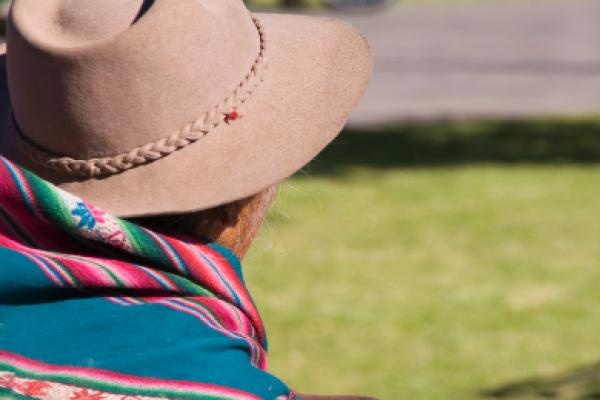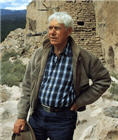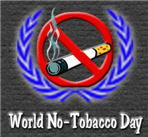guest |
August 14th, 2012
Laylat al-Qadr is also known as the Night of Power or the Night of Destiny.

Night of a Thousand Months
It is a very important night in the Muslim calendar as it is said to be the night Allah revealed the first verses of the Quran to prophet Muhammad. Muhammad received the first revelations through the Archangel Gabriel. The revelations continued for two decades throughout Muhammad’s life and together they came to form the Quran. Fittingly, the word Quran, in English, means ‘recitation.’
There is some controversy over the exact date for Laylat al-Qadr but the night is usually celebrated on the 27th of Ramadan. The last ten days of Ramadan are most important and it is likely that the true night for Lailat al-Qadr falls on any of the odd nights. During the last ten days charity work is likely to increase among Muslims. People want to make sure they have given enough during the holy month.
This night marks the beginning of Muhammad’s mission, and Muslims, therefore, regard it as the most important night in history. The Quran says that this night is better than a thousand months (that’s 83.3 years in modern terms)…
Read more.. »
guest |
August 10th, 2012
Janmashtami is an important day in the Hindu calendar because it marks the birth of Krishna, one of the most popular Hindu gods.

Dahi Handi
Most Hindus believe that Krishna is the avatar, or incarnation, of Vishnu, one of the five primary forms of God. Vishnu is the preserver and protector of the universe. Vishnu usually appears in a human body, with blue-coloured skin and four arms. Krishna, on the other hand, has a variety of forms. Most popular forms are Krishna as a blue god-child, as a divine hero, or as a model lover.
Krishna is always the centre of Janmashatami, but the day is celebrated differently across India. Around Mumbai, in the state of Maharashtra, it’s common to celebrate with a sport called Dahi Handi. In Dahi Handi, a handi, a clay pot filled with buttermilk, is first hung to a high location. A group of men then forms a human pyramid beneath the handi, and the topmost person in the pyramid tries to break the claypot. As buttermilk from the broken handi drips down the human pyramid it symbolizes unity.
Read more.. »
The International Day for the World’s Indigenous People was first proclaimed in 1994 by the United Nations.

25% of Ecuador's population is indigenous. Their history encompasses the last 11,000 years.
In 2007, the General Assembly adopted the Declaration On The Rights Of Indigenous People. At first, Australia, New Zealand, United States, and Canada all voted against the declaration but they have all reversed their positions since.
The International Day for the World’s Indigenous People is important because in our increasingly globalized, technology-driven world indigenous people are often forgotten. This year’s theme is “Indigenous media, empowering indigenous voices.” The day aims to encourage more and more indigenous people around the world to promote and spread their culture, language, and values through traditional and new media forms…
Read more.. »
Today, three years have passed since the death of Edward T. Hall, an American anthologist and cultural researcher.
His work on  nonverbal communication was groundbreaking at the time but today is accepted as normal in the world of anthropology. His legacy as an anthropologist is immense – however, his legacy to the ‘new comers’ – the interculturalists – is inspirational. Much of the work we do in the field of intercultural studies, cross-cultural communication and cultural diversity has its base firmly planted in the foundations of the understanding and insights he laid down.
nonverbal communication was groundbreaking at the time but today is accepted as normal in the world of anthropology. His legacy as an anthropologist is immense – however, his legacy to the ‘new comers’ – the interculturalists – is inspirational. Much of the work we do in the field of intercultural studies, cross-cultural communication and cultural diversity has its base firmly planted in the foundations of the understanding and insights he laid down.
Read more.. »
Every year, on June 20th, the United Nations observes World Refugee Day. Some countries also organize an annual refuge week.

Burmese refugees march on World Refugee Day.
In the UK, the refuge week is from the 18th to the 24th of June. Refuge week is a time to recognize the hardships, determination, and courage of people who are forced to leave their homes due to war and oppression. Moreover, in the UK, refuge week is a time to celebrate the various contributions refugees bring to the country. The Telegraph lists ten examples of refugee contributions, among which are the following:
– One of Britain’s most famous buildings, Hampton Court Palace, was designed by a French Huguenot refugee.
– It is believed that fish and chips was brought over in the 17th century by Jewish refugees from Portugal.
– Hip-hop musician, political activist and designer M.I.A. is a Sri Lankan refugee.
– A son of an Italian refugee designed the Millennium Dome.
In 2011, there was a 20% increase in the amount of asylum seekers around the world. The on-going conflict in Afghanistan means that the country has more asylum seekers than any other country in the world. In 2011 alone 36,000 Afghans requested asylum. Other examples of countries producing a high number of asylum requests are Serbia, China, and Pakistan. United States, France, and Germany received the most requests for international protection. In 2011, UK was the seventh biggest receiver.
Today is the tenth time the world celebrates World Day Against Child Labor.
The International Labor Organization, (ILO), launched the day in 2002 as a way to bring attention to the hundreds of millions of working children deprived of a childhood.

Hundreds of millions of children start work too early.
Children who are forced to work are denied of the opportunity to go to school, and instead they are often forced to work in dangerous, hazardous conditions.
In 2010, the international community adopted a roadmap for achieving elimination for the worst forms of child labor by 2016. The document stresses children’s right to personal freedom and highlights that child labor is a hindrance for development. The document distinguishes the four following conditions as the worst forms of child labor: all forms of slavery, prostitution or use of children for pornographic material, use of children for production or trafficking drugs, and work which is likely to harm a child’s health.
Read more.. »
In 1987, the World Health Organisation called for a world-wide 
abstinence from smoking each year of 31st May. Called the “World No Tobacco Day” this 24-hour long period is intended to draw global attention to the widespread prevalence of tobacco related illnesses and negative health effects which cause 5.4 million deaths each year. However, is it seems that non-Western nations take the day more seriously and protest loudest…
Read more.. »
So, how much cultural competence do you think there is in
cheek kissing? Well, we recently started a conversation on SIETAR Europa’s Linked In group and the plethora of responses confirmed that there are various ways to greet with a kiss. But what may have come as a surprise to some of us was that the ways of kissing don’t only vary from one country to another, but from region to region, from day to night, from male to female, and from one person to the next. What I can conclude from the conversation is that my initially abstract title-phrase, the ‘art’ of cheek kissing, became to perfectly describe this social gesture: a gesture that has no rule-of-thumb, a gesture that is cultural as well as personal.
So, it seems that although cheek kissing is a common greeting across the globe, one has to be truly culturally competent to smoothly master the art of cheek kissing! Read about the differnces and learn that London is a one-kiss city.
Read more.. »
The Europeans may be ahead of the US in terms of accommodating climate change as a BIG issue, but it was a US Senator who brought about an awareness day forty years ago – Earth Day. Whilst we are trying to save the world one recyclable, reusable bag and low-watt light bulb at a time, it is interesting to note how the different nations of the world think about climate change and how differently they are planning their future energy needs…
Read more.. »
The International Day for Street Children was organized for the first time in 2011.

Louder Together
The day was launched by a London-based organization called CSC, Consortium for Street Children which aims to bring a voice for the tens of millions of children who live and work on the streets all around the world.
Why the International Day for Street Children matters is that these children, extremely vulnerable and at risk for sexual abuse, exploitation, and extreme poverty, are too often ignored in policy and programming. They live in the margins of society and face constant discrimination, not only in their communities but from policy makers.
Read more.. »











 Hello, I'm Deborah Swallow and, for the last fifteen years, I've worked in over thirty countries addressing the complexities of people working internationally across multiple cultures, so individuals and organisations alike can gain an authentic competitive edge and win in international markets.
Hello, I'm Deborah Swallow and, for the last fifteen years, I've worked in over thirty countries addressing the complexities of people working internationally across multiple cultures, so individuals and organisations alike can gain an authentic competitive edge and win in international markets. 